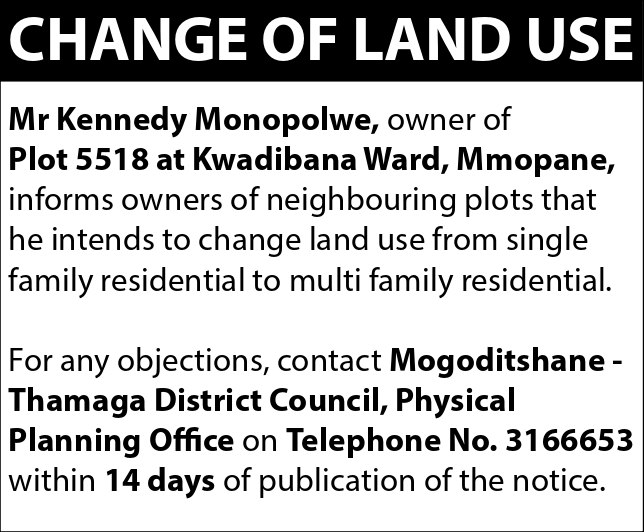- Says numbers of patrons should be guided by the capacity of venues
- Want more consultation towards a more appropriate rescue plan
GOSEGO MOTSUMI
The government’s limit of 75 as the maximum number of patrons at a function has been roundly criticized for making no economic sense by events organizers and creatives.
Lifting restrictions on the entertainment and arts industry last week following months of growing pressure since the countrywide lockdown on April 3, President Mokgweetsi Masisi said the number of people attending any entertainment function anywhere must not exceed 75 excluding performers.
That won’t do, say event organizers who point out that 75 is not even a start. With 75, they say, they wouldn’t even begin to talk about breaking even. Although the total ban on events meant total abjection for them and entertainers, the logistics that come with staging an event still come at a cost that 75 patrons coming through the entrance wouldn’t come anywhere near covering.
Promoter Seabelo Modibe says 75 patrons is not even a drop in the bucket for people already drowning in a sea of debt. “five-hundred or 1000 patrons may begin to make sense,” he says, “especially for open air concerts.”
“The economic solution to this problem was for the COVID-19 Task Force to meet with industry experts to discuss a lasting solution before making any decision. This latest intervention only goes to show that there really is no plan for the creative industry.”
According to Modibe, before the nation and the entertainment industry grappled with the mayhem caused by the novel Coronavirus, events were a lucrative venture, especially when the marketing and planning were done right. For an event or picnic with six local DJs performing, sound, security, venue and advertising would cost a minimum of P50 000 while the event could easily make about P100 000.
With 2000 people buying tickets for P100 apiece, an event with the right marketing could make P350 000, which would be enough to could keep an event organizer sufficiently afloat to stage another gig. “Right now people have financial constraints and we can’t expect them to buy a P500 ticket to make up for the restricted numbers,” Modibe says.
At any rate, he says, interventions to save the creative industry may require ideas more than money. He sees the 100% airplay of the works of local artists by all radio stations as a potential solution because more royalties would go to local artists without foreigners. “Artists are getting agitated,” says Modibe. “All these decisions are trade related and have nothing to do with promotion of arts and culture.”
Promoter Gilbert “PP” Seagile, who is also president of BEPA, shares similar sentiments. Seagile says number of people attending should be guided by the capacity of the venue. If 75 people paid P50 for a clubbing experience, the owners would make P3750. But with required fumigation of venues every two hours, the fumigation bill would come to P8000 at P2000 each time.
“Even though this effort is commendable in that they recognize that the creative industry is struggling, it doesn’t make financial sense,” he says. “The decision was made without any consultation with us but the tourism and transport sectors were consulted. Consulting would help develop an appropriate solution to assist the industry.”
Event planner David “DVD” Abram agrees that consultation is important. In his view, interventions should include opening clubs and permitting picnics for 50% of the capacity of venues. “We are now also working on recovery measures and we had proposed that the government should inject about P20 million to be used on virtual events,” says Abram.
“We had identified 72 events that would each be funded with P300 000. The youth ministry had a budget of P70 million from COVID-19 Relief Fund and about P40 million remains after assisting some artists while some were rejected for various reasons. These funds could be used to further assist the industry.”




